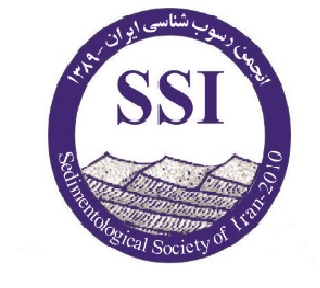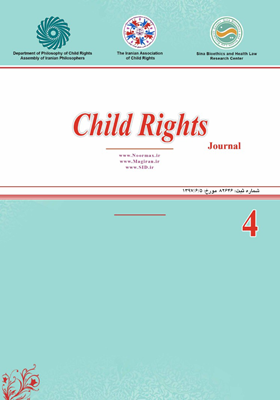Responsibility of Governments and Mechanisms for Protecting Children's Rights in Cyberspace
Subject Areas : حقوق کودک
1 - Associate Professor and Faculty Member of Supreme National Defense University, Tehran, Iran
Keywords: Children, Cyberspace, Cyber Threats, Violation, International Documents,
Abstract :
The increasing development of cyberspace and the use of ICTs have had an effective role in the production, dissemination and transmission of information and have provided the community with access to online content. As such, cyberspace is an enabling tool to promote fundamental freedoms such as freedom of speech, freedom of access to information and an effective means of promoting human rights, however, at the same time it can provide the conditions for breach, violation or restriction of individual's rights. Amongst them, children's rights, as the most vulnerable segment of society, are often abused and invaded. In the contemporary world, children spend a great deal of time on educational, leisure and entertainment activities in cyberspace and online. In this space with the expanse of its domain, anonymity, the high speed, the lack of borders, the lack of mechanisms of government oversight, would have an intensive impact on the domain of users' cognition and perception and pose special risks to individuals, especially children and adolescents. Therefore, the rights of the child must be protected by governments, non-governmental organizations, civil institutions and other child affairs authorities. The main question of this study is what are the positive and negative obligations of governments to protect children in cyberspace under international customary law and internationally accredited documents? What technical, legal and structural mechanisms are available to protect children against online' damages? What has been the practice of governments and international institutions and civil society in protecting children's rights on the one hand and maintaining a free flow of information and freedom of expression on the other? To answer these questions, the researcher uses a descriptive method to provide a coherent legal framework for protecting children in cyberspace.
1. Ghari Seyed Fatemi SM. Human Rights in the Contemporary World. Tehran: Institute of Legal Studies and Research of its Mayors; 2009. Vol.2 p.195.
2. Biparva A, RobatJazi MT. Protecting Children in Cyberspace in the Framework of Regional and International Documents. Tehran: First National Conference on Cybercrime: Challenges and Solutions; 2016. p.54.
3. UNCRC (United Nations Convention on the Rights of the Child). 1989.
4. Christopher De Bono C. Global research agenda for children's rights in the digital age. UNICEF East Asia and Pacific Regional Office, Bangkok. Journal of Children and Media 2013; 8(4): 317-335.
5. France, Information Systems Defense and Security: France’s Strategy. 2011. p.21.
6. Motamed Nejad K. UNESCO and Child Protection against the Internet. Media Mag 2001;46: 28-33.
7. Available at: https://www.unicef.org/sowc2017/.
8. Available at: https://rm.coe.int/guidelines-to-respect-protect-and-fulfil-the-rights-of-the-child-in-th/16808d881a.
9. Available at: https://www.researchgate.net/www.researchgate.net.
10. Chabakpour M. The role of the cyber environment in crime. Tehran: Faculty of Law and Political Science; 2014.
11. Didaban S. Criminological Investigation of Child Pornography. Tehran: School of Law and Political Science; 2014.
12. Islami I. Position of Protecting Victims of Cybercrime in Criminal Law and International Law. Journal of Law Islamic 2016; 1(43 Consecutive): 158-182.
13. Biparva A, Aamani SGH. Human and citizenship rights education by media. Modern Applied Science 2016; 9: 265.
14. Margaret AH. Child Pornography: An International Perspective. Stockholm: Computer Crime Research Center; 1998. p.135-152. Available at: http://www.crime-research.org/articles/536/. Visited at October 8, 2019.
15. ; 1998.
16. Hoskins E, Hick S, Helpin E. Human Rights and the Internet. Translated by Zamani SGH, Behramloo M. Tehran: Khorsandi Publications; 2007. p.240.
17. Calcetas-Santos. United Nations Special Rapporteur on the sale of children, child prostitution and child pornography, (1994-2001). Geneva: UNESCO; 1999. p.19.
18. Human rights guidelines for Internet Service Providers, Council of Europe Expert on Data Protection. 2014.
19. Human rights guidelines for online games providers, Council of Europe Expert on Data Protection. 2014.
20. Skoog DM. Innocence exploited: Child pornography in the electronic age. Ottawa: Canadian Police College; 1998. p.266.
21. Livingstone S. Knowledge enhancement: The risks and opportunities of evidence-based policy. Edited by O’Neill B, Staksrud E, Mc Laughlin S. Towards a Better Internet for Children? European Policy Pillars, Players and Paradoxes. Göteborg: Nordicom; 2013. p.93-109.

